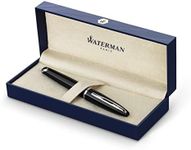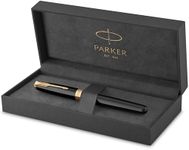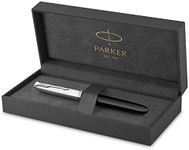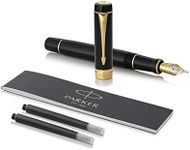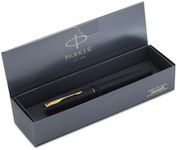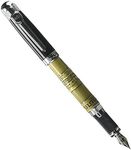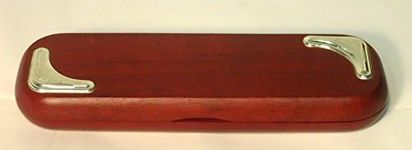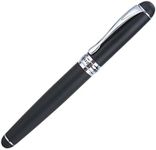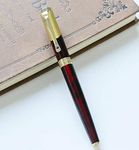Buying Guide for the Best Parker Fountain Pens
Choosing the right Parker fountain pen involves understanding your personal preferences and needs. Fountain pens are not just writing instruments; they are a statement of style and a tool for enhancing your writing experience. To make an informed decision, consider the following key specifications and how they align with your writing habits and preferences.Nib MaterialThe nib is the part of the pen that touches the paper, and its material can significantly affect your writing experience. Common materials include stainless steel and gold. Stainless steel nibs are durable and provide a consistent writing experience, making them suitable for everyday use. Gold nibs, on the other hand, offer a smoother writing experience and can adapt to your writing style over time, but they are more expensive. If you write frequently and value a luxurious feel, a gold nib might be worth the investment. For casual or everyday writing, a stainless steel nib is a practical choice.
Nib SizeNib size determines the thickness of the line the pen produces. Common sizes include extra fine (EF), fine (F), medium (M), and broad (B). Extra fine nibs are great for detailed writing and small handwriting. Fine nibs are slightly thicker and are good for general writing. Medium nibs are the most versatile, providing a balance between line thickness and smoothness. Broad nibs produce thick lines and are ideal for bold, expressive writing. Choose a nib size based on your handwriting style and the type of writing you do most often.
Filling MechanismFountain pens can be filled with ink in various ways, including cartridge, converter, and piston mechanisms. Cartridge systems are convenient and easy to use, making them ideal for beginners or those who prefer low maintenance. Converters allow you to use bottled ink, offering a wider range of ink colors and types. Piston fillers have a built-in mechanism for drawing ink directly from a bottle, providing a larger ink capacity. Consider how often you write and your preference for convenience versus ink variety when choosing a filling mechanism.
Body MaterialThe material of the pen's body affects its weight, durability, and aesthetics. Common materials include plastic, resin, metal, and lacquer. Plastic and resin pens are lightweight and comfortable for long writing sessions. Metal pens are more durable and have a premium feel but can be heavier. Lacquered pens offer a high-gloss finish and a luxurious appearance. Choose a body material that feels comfortable in your hand and matches your style preferences.
Grip SectionThe grip section is where you hold the pen, and its design can impact your writing comfort. Some pens have contoured grips that guide your fingers into a specific position, which can be helpful for maintaining proper writing posture. Others have smooth or textured grips that offer more flexibility in how you hold the pen. If you write for extended periods, look for a grip that feels comfortable and reduces hand fatigue.
Ink FlowInk flow refers to how smoothly and consistently the ink is delivered to the paper. A pen with good ink flow will write without skipping or blotting. This is influenced by the nib design and the quality of the feed system. If you prefer a pen that writes effortlessly and consistently, look for reviews or try the pen to ensure it has reliable ink flow. This is particularly important for those who write quickly or need a pen for professional use.


